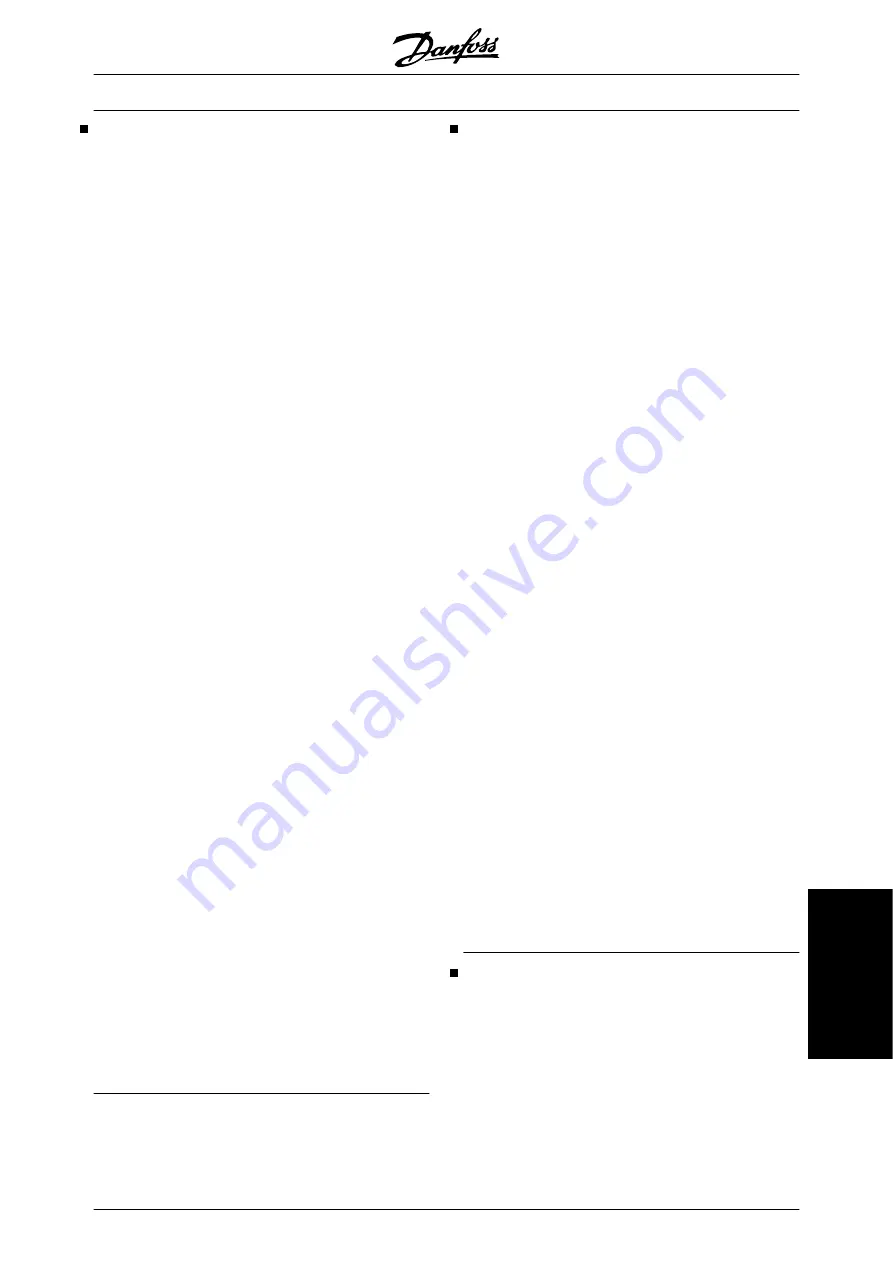
CE labelling
What is CE labelling?
The purpose of CE labelling is to avoid technical ob-
stacles to trade within EFTA and the EU. The EU has
introduced the CE label as a simple way of showing
whether a product complies with the relevant EU di-
rectives. The CE label says nothing about the specifi-
cations or quality of the product. Frequency converters
are regulated by three EU directives:
•The machinery directive (98/37/EEC)
All machines with critical moving parts are covered by
the machinery directive, which came into force on 1
January 1995. Since a frequency converter is largely
electrical, it does not fall under the machinery directive.
However, if a frequency converter is supplied for use
in a machine, we provide information on safety aspects
relating to the frequency converter. We do this by
means of a manufacturer's declaration.
•The low-voltage directive (73/23/EEC)
Frequency converters must be CE labelled in accord-
ance with the low-voltage directive, which came into
force on 1 January 1997. The directive applies to all
electrical equipment and appliances used in the 50 -
1000 Volt AC and the 75 - 1500 Volt DC voltage
ranges. Danfoss CE labels in accordance with the di-
rective and issues a declaration of conformity upon
request.
•The EMC directive (89/336/EEC)
EMC is short for electromagnetic compatibility. The
presence of electromagnetic compatibility means that
the mutual interference between different compo-
nents/appliances is so small that the functioning of the
appliances is not affected.
The EMC directive came into force on 1 January 1996.
Danfoss CE labels in accordance with the directive
and issues a declaration of conformity upon request.
In order that EMC-correct installation can be carried
out, this manual gives detailed instructions for instal-
lation. In addition, we specify the standards which our
different products comply with. We offer the filters that
can be seen from the specifications and provide other
types of assistance to ensure the optimum EMC result.
In the great majority of cases, the frequency converter
is used by professionals of the trade as a complex
component forming part of a larger appliance, system
or installation. It must be noted that the responsibility
for the final EMC properties of the appliance, system
or installation rests with the installer.
What is covered
The EU "Guidelines on the Application of Council Di-
rective 89/336/EEC" outline three typical situations of
using a frequency converter. For each of these situa-
tions, explanations are offered as to whether the sit-
uation in question is covered by the EMC directive and
must be CE labelled.
1.
The frequency converter is sold directly to the
end-consumer. The frequency converter is
for example sold to a DIY market. The end-
consumer is a layman. He installs the fre-
quency converter himself for use with a
hobby machine, a kitchen appliance, etc. For
such applications, the VLT frequency con-
verter must be CE labelled in accordance
with the EMC directive.
2.
The frequency converter is sold for installa-
tion in a plant. The plant is built up by profes-
sionals of the trade. It could be a production
plant or a heating/ventilation plant designed
and installed by professionals of the trade.
Neither the frequency converter nor the fin-
ished plant has to be CE labelled under the
EMC directive. However, the unit must com-
ply with the basic EMC requirements of the
directive. The installer can ensure this by us-
ing components, appliances and systems
that are CE labelled under the EMC directive.
3.
The frequency converter is sold as part of a
complete system. The system is being mar-
keted as complete. It could be e.g. an air-
conditioning system. The complete system
must be CE labelled in accordance with the
EMC directive. The manufacturer who sup-
plies the system can ensure CE labelling un-
der the EMC directive either by using CE
labelled components or by testing the EMC
of the system. If he chooses to use only CE
labelled components, he does not have to
test the entire system.
Danfoss VLT frequency converter and CE labeling
CE labelling is a positive feature when used for its
original purpose, i.e. to facilitate trade within the EU
and EFTA.
However, CE labelling may cover many different spec-
ifications. This means that is has to be checked what
a given CE label specifically covers.
The specifications covered can in fact be widely dif-
ferent. That is why a CE label can give the installer a
VLT
®
5000 Design Guide
MG.52.B2.02 - VLT
®
is a registered Danfoss trademark
121
Special
conditions






























